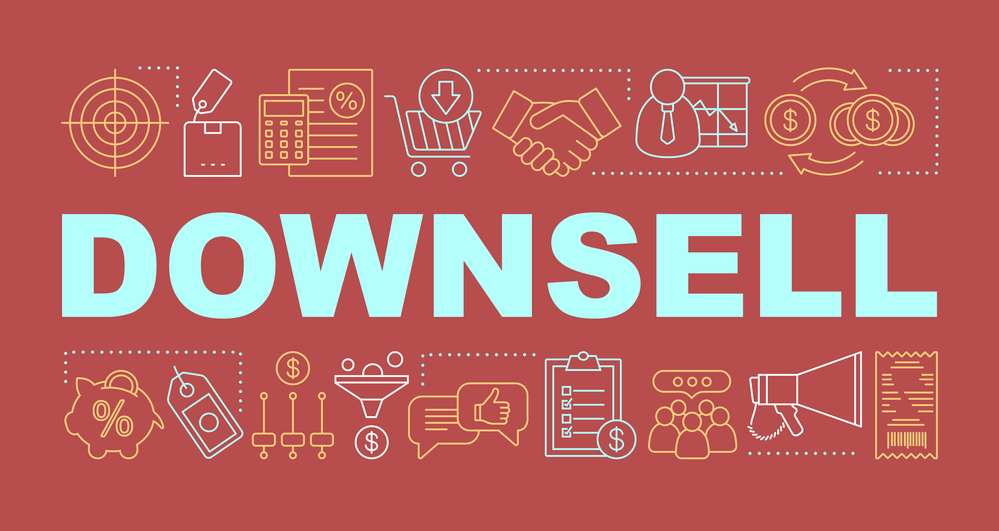
Killer SaaS Marketing Strategy: Transform Use Case Pages into Revenue Generators
Oct 6, 2023 3 minutes
Turning your product’s use case and feature pages into undeniable assets is non-negotiable. You need a strategy that not only draws attention but also converts interested visitors into revenue-contributing customers.
Ever wondered how some SaaS companies make significant strides in user acquisition within seemingly impossible timelines?
You already know how important email marketing, social media posts, and basic content marketing strategies across marketing channels is for the customer journey from curious window shopper to dedicated member of your customer base. But your marketing efforts don’t end there—you’ve left out a crucial yet oft overlooked element.
The secret lies in a meticulously crafted and tested SEO & CRO framework that supercharges your use case and feature pages, turning them into powerful mechanisms for lead generation and customer churn rate reduction.
In this post, we’ll unpack the framework’s 13 high-priority elements that play a pivotal role in scaling a SaaS business from 100,000 users to a whopping 250,000 within a year.
Whether you’re a startup finding your footing or an established name in the software as a service industry, these insights are tailored to instill your pages with the dynamism and appeal necessary for capturing and converting your target audience.
SEO & CRO Framework Overview
Mastering the art of showcasing your product’s features and use cases is paramount in the SaaS industry. However, it’s not just about listing the benefits; it’s about presenting them in a way that resonates with your audience while also ticking all the right boxes for search engine optimization (SEO) and conversion rate optimization (CRO).
This synergy is where the magic happens, providing a seamless pathway from curious visitor to satisfied customer while improving the customer lifetime value.
The SEO & CRO framework we’re introducing today is not a shot in the dark. It’s a well-oiled machine, the outcome of meticulous planning, testing, and refining, ready to launch your user base numbers to new heights.
Each of the 13 high-priority items within this framework is a cog in this machine, playing a vital role in navigating the user through a journey that’s not only informative but irresistibly compelling.
Crafting the Narrative with SEO
Visibility is currency. This framework integrates potent SEO strategies, ensuring that your SaaS product isn’t just another face in the crowd but a standout performer. From incorporating breadcrumbs for navigational ease to internal linking modules directing to resources, tools, and blogs, each element works to enhance your page’s SEO profile.
This strategic approach ensures that your in-depth feature and use case pages are not only easy to find but also serve as authoritative resources that pull in organic traffic consistently.
Driving Conversions with CRO
But what’s traffic without conversion? This is where CRO enters the stage, turning the spotlight on your product’s unique selling propositions and benefits. With concise descriptions of key differentiators, pain-focused headlines, and engaging in-product images or videos, the framework crafts an experience that addresses your audience’s needs and pain points head-on. It’s not just about showcasing what your software does; it’s about illustrating its direct impact on your potential and current customer’s daily challenges and long-term goals.
The Proof is in the Numbers
Success in SaaS marketing campaigns is measurable, and the metrics speak volumes. The application of this framework mirrors the journey of a SaaS product that saw its user base balloon from 100,000 to 250,000 within a year. Each element within the framework contributed to creating pages that were not only rich in information but also perfectly poised for conversion, providing a user experience that was seamless, engaging, and ultimately, convincing.
Essential Above-the-Fold Elements
Navigating the cluttered digital space requires not just visibility but instant captivation and clarity. When potential customers land on your use case or feature pages, the above-the-fold content—the portion of your webpage visible without scrolling—is your first and sometimes only shot at grabbing their attention.
Breadcrumbs for Easy Navigation
First up, (1) breadcrumbs. These seemingly small navigational aids make a significant difference. Breadcrumbs guide visitors through your site with ease, providing a clear path from their entry point to their current location, enhancing user experience while subtly boosting your SEO.
Highlighting Positioning and Key Benefits
Your product’s value proposition should take center stage above the fold. Clearly and concisely communicate the (2) unique positioning of your SaaS offering and its key benefits. This immediate insight into what your product is and why it matters creates an instant connection with potential customers, addressing their needs and sparking interest from the get-go.
Visual Engagement with In-Product Image or Video
In today’s fast-paced digital environment, visuals aren’t optional; they’re essential. Incorporating (3) in-product images or videos above the fold provides a snapshot of your product in action, offering a tangible glimpse into its functionality and benefits. These visuals act as immediate engagement boosters, drawing the visitor in while providing valuable context.
Showcasing Third-Party Reviews
Trust is a currency in the online realm, and (4) third-party reviews are gold. Featuring these high-quality testimonials above the fold lends credibility and social proof to your product, subtly persuading new visitors that your SaaS business model is the trusted choice among their peers and industry leaders. This immediate display of trustworthiness lays a solid foundation for the conversion process to unfold.
Interactive & Concise Content
Engaging your audience goes beyond flashy headlines and striking images. In a world where attention spans are increasingly limited, delivering value quickly and effectively is crucial. Interactive and concise content is the key, offering a dynamic user experience while getting straight to the point.
Interactive Demos or In-Product Videos
In the realm of SaaS, seeing is believing. (5) Interactive demos or in-product videos offer a front-row seat to your software’s capabilities. These dynamic visuals allow potential customers to explore features, understand use cases, and visualize the benefits your product brings to the table.
Whether it’s a guided tour, a hands-on demo, or a brief video highlighting critical functions, interactive content fosters engagement and understanding, acting as a silent yet persuasive salesperson on your page.
Concise Descriptions of Key Differentiators
With numerous SaaS solutions vying for attention, standing out is non-negotiable. (6) Concise descriptions that spotlight your product’s key differentiators are instrumental in this endeavor. Clearly articulate what sets your software apart from the competition, focusing on unique features, unparalleled benefits, and the distinctive value your customers can expect.
Short, impactful, and compelling descriptions not only inform but also persuade, subtly nudging the visitor closer to conversion. These tidbits of information shouldn’t be left solely in the onboarding stage, use them to your advantage!
Pain-Focused Headlines and Content Sections
Your audience is on your landing page for one primary reason—they have a problem, and they’re seeking a solution. (7) Crafting headlines and content sections that speak directly to these pain points establishes an immediate rapport with visitors. It shows that you understand their challenges, and more importantly, have the remedy they need. Pain-focused content is empathetic, relevant, and powerful, striking a chord with potential customers and positioning your product as the answer to their dilemmas.
Harnessing the Power of Internal Linking
Internal linking, while often overlooked, is a powerhouse technique within your SEO and CRO arsenal. By creating a web of related content, you not only enhance the user experience but also boost your site’s SEO performance.
Let’s explore how to leverage internal linking to transform your use case/case study and feature pages into interconnected hubs of inbound marketing value.
Internal Linking to Other Use Case Pages
Each use case or feature page on your site should not exist in isolation. These pages are parts of a larger puzzle, providing a comprehensive view of your software’s capabilities. (8) Internal links that connect various use case pages create a seamless navigational experience, encouraging users to explore further and understand the breadth of solutions your product offers.
This interconnected approach also aids in spreading link equity across your site, bolstering the SEO strength of each page.
Linking Module to Resources and Tools
Your use case and feature pages should serve as launching pads to deeper insights and resources. Including (9) internal links to relevant tools and resources provides users with valuable additional information and guidance, enhancing their journey and positioning your brand as a knowledgeable and helpful partner. These links also contribute to a richer site structure, further supporting your SEO initiatives.
Connecting to Relevant Blog Posts
Your blog is a treasure trove of insights, stories, and expertise—especially those with infographics that outline exactly what a customer needs to know.
By (10) internally linking to pertinent blog posts, you not only offer users deeper knowledge but also foster engagement with your brand’s narrative and thought leadership. These links provide further reading opportunities for interested visitors, nurturing their connection with your brand while subtly guiding them along the conversion pathway.
Still not seeing a growth in your customer base? Your payment processor could be the issue!
Trust and Proof Elements
In an era where consumers are bombarded with endless product options, establishing trust is paramount. Trust and proof elements act as silent endorsers of your SaaS product, subtly persuading prospects that your solution is reliable, effective, and worth investing in.
ICP’s Testimonials in Different Formats
(11) Testimonials from your Ideal Customer Profiles (ICPs) are potent tools in building trust. Incorporate testimonials in various formats—be it text, video, or images—showcasing real feedback from existing customers who have derived tangible value from your product. These testimonials serve as relatable, credible voices supporting your product’s merits, resonating with prospects and nudging them toward conversion.
Highlighting Tangible Results After Using Software
Results speak louder than features. Dedicate space on your page to highlight the (12) tangible, measurable outcomes customers have achieved using your software. Whether it’s improved efficiency, increased revenue, or enhanced customer engagement, showcasing real results provides prospects with a compelling preview of the value they can expect, reinforcing their decision to choose your solution.
The FAQ Advantage
In the journey of converting curious visitors to committed SaaS customers, addressing concerns and questions proactively is vital. The FAQ section on your use case or feature pages serves this exact purpose, providing instant clarity and building confidence among your prospects. Let’s delve into the unique advantages this section brings to your pages.
Immediate Answers to Pressing Concerns
Prospects often come armed with a set of questions and uncertainties. An (13) FAQ section provides immediate responses to these common queries, reducing hesitation and doubt in the prospect’s mind. This proactive approach to addressing concerns facilitates a smoother, more assured decision-making process for potential customers.
Showcasing Depth of Knowledge
A well-crafted FAQ not only answers questions but also subtly showcases your brand’s expertise and understanding of the industry and customer needs. This demonstration of knowledge fosters trust among visitors, positioning your brand as an authority and reliable partner in the eyes of potential customers.
SEO Boost Through Relevant Keywords
The FAQ section offers a natural platform to incorporate relevant keywords seamlessly. By crafting questions and answers that use terms and phrases your target audience commonly searches for, you enhance the SEO profile of your page, making it more visible and accessible to those seeking the solutions your product provides.
Reducing Bounce Rate
By providing instant answers, you engage visitors for a longer duration, reducing the chances of them leaving the page without exploring further. This reduction in bounce rate is not only beneficial for SEO but also improves the likelihood of conversion, leading to customer success.
Conclusion
Embarking on a journey of effectively marketing your SaaS product’s use case and feature pages demands a blend of strategy, understanding of your audience, and deployment of proven techniques that drive conversion. The framework outlined in this post is a marketing tool that offers you an invaluable roadmap, honed through real-world success and application, designed to turn your pages into persuasive, revenue-generating assets.
Don’t forget to link your site to Google Analytics so you can analyze just how powerful this SaaS marketing plan is in real-time (nearly).
But as you take the steps to optimize your pages and bring in a tide of new customers while improving customer retention and reducing customer acquisition costs, ensuring smooth and secure transactions becomes equally crucial. This is especially significant if you’re dealing with high-risk transactions where the margin for error is razor-thin.
Secure your sales funnel further with a payment services provider that understands your business.




